#animals welfare
Note
What do you think about cetacean artificial insemination?
I have no ethical objections to the use of artificial insemination in any species.
19 notes
·
View notes
Text
My favorite signage from the NEW Zoo in northern Wisconsin.

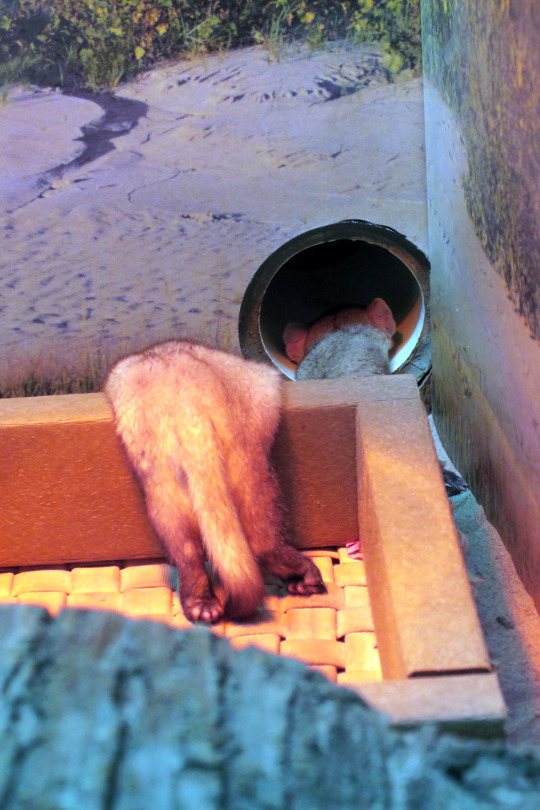
26K notes
·
View notes
Text
A study that just came out demonstrates that outdoor cats are known to prey on over two thousands species of wild animal, from mammals to birds to insects. That includes 347 species that are endangered, threatened or otherwise of concern, and they've been a key factor of the permanent extinction of over 60 species. And while cats may not always bring home what they catch, chances are if your cat is allowed to roam unsupervised outside, they're killing your local wildlife.
Why is this so important? Worldwide, wild animal populations have decreased in number by 69% in the past fifty years; that means that in my lifetime (born in 1978), the sheer number of wild animals in the world has been decreased by over half. Even "common" wild species are less numerous than before. While habitat population is the single biggest cause of species endangerment and extinction overall, outdoor and indoor/outdoor cats are a significant cause as well. In fact, they are the single biggest cause of human-caused mortality in wild birds.
Most importantly, it's very, very simple to fix this problem: keep your cats indoors, and spay and neuter them. If your cat is bored, they need more enrichment, and there are plenty of ways to make your home more exciting for them, from bringing home cardboard boxes for them to explore, to playing with them more often. If you want your cat to get some outdoor enrichment, leash train them (yes, it can be done!) If you have the space and resources, build them a catio where they can be safe from outdoor dangers like predators and cars, while also keeping local wildlife safe from them.
If you just give into their whining and pawing at the door, then they know that that's what they have to do to get their way; I know it's a tough transition, but it's worth it in the end for everyone involved. Cats are domesticated, which means they are not native anywhere in the world; there are exactly zero ecosystems in which they belong, save for the safety of your home. It is your responsibility to give them an enriching environment without taking the shortcut of letting them go wreak havoc outside.
#cats#outdoor cats#feral cats#nature#wildlife#animals#ecology#environment#conservation#science#scicomm#birds#endangered species#extinction#domesticated animals#domestication#biology#animal behavior#animal welfare
8K notes
·
View notes
Text
As someone who works w animals “animals are not mindless automatons, they actually do have feelings and individuality and are capable of feeling acute physical and emotional pain and of forming deep attachments with other animals and people” and “animals are not human infants and have a limited capacity to communicate with humans so you have to familiarize yourself with their boundaries bc if they feel threatened or overstimulated they will fall back on their basic instincts and if you fuck around you are going to find out” are statements that can and should coexist
#why is this so hard for ppl to understand#yes they’re capable of genuine love and empathy#no that doesn’t come with an endless supply of patience for human bs or a complex understanding of human motivations#bc they aren’t just here for human consumption they’re literally vibing#animal rights#animal welfare#animal care#animal exploitation
47K notes
·
View notes
Photo

24K notes
·
View notes
Text

pulling the pin on this grenade of a meme and sprinting for the nearest shelter
9K notes
·
View notes
Text
It’s so fascinating to me that we’ve only been breeding Komodo dragons in captivity for thirty years. In that time, our understanding of them has actually really revolutionized the way we understand the social lives and behaviors of lizards in general, and it’s mostly thanks to this lady right here, who was born 30 years ago on September 13, 1992.
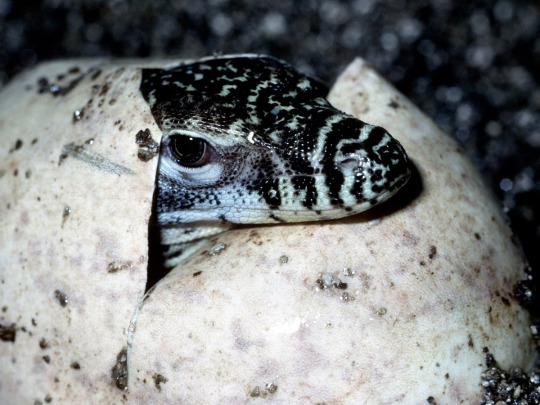
Kraken was the first Komodo to be bred in captivity. She hatched out at GMU, but was raised at the National Zoo. Her parents were wild-caught dragons- there’s still WC dragons in the AZA today- and this one specific individual probably did more to revolutionize lizard care in professional settings than any other individual lizard throughout zoo history.
Until Kraken, social enrichment wasn’t a thing people thought about. It wasn’t something anybody felt was necessary for lizards, because they were just... lizards. Sure, some keepers would play with their favorites, but it wasn’t until the National Zoo started documenting what she was doing that anybody realized how much Komodo dragons like to play with us too.
undefined
youtube
Kraken’s not in that video, but she’s the one who inspired all of the social studies that have been done on captive Komodo dragons. When she was at the National Zoo, her keepers started getting curious when, for no apparent reason, she kept gingerly stealing things from peoples’ pockets and tugging on their shoelaces. So they started giving her stuff- Frisbees, blankets, soda cans, anything she showed an interest in.
She played with them, just like a mammal might. The way play behavior is described in psychology is a given activity that’s voluntary, repeated, and conducted under “relatively benign” circumstances. Keeper staff found that her conduct during the study met all of these criteria. “Kraken,” they wrote, had clearly demonstrated “play-like behavior with objects and even with humans (tug-of-war).” Moreover, she “could discriminate between prey and nonprey” while showing “varying responses” with different items (rubber rings, shoes, etc.). (There’s an excellent book on Komodo dragons that has an entire chapter devoted to her.)
Kraken died several years ago, but her legacy continues today. There’s several of her descendants still in the AZA, and the intelligence and social needs she demonstrated led to the improvement of life for these guys- and other lizards. The Komodo dragon program has been an eye opener, not just for reptile conservation, but for understanding reptile intelligence and how this incredible clade of animals functions.
#komodo dragon#thinking a lot about animal welfare and animal wellbeing#where would we be with reptiles if somebody hadn't realized how much this one specific animal liked to play?#reptile#reptiblr#Youtube
26K notes
·
View notes
Text
I think it's a common misconception that domesticating animals is somewhat like enslaving them. It really is more of a symbiotic relationship. No wild animal would have willingly put up with early humans if they didn't get something out of it. Wolves wouldn't have stayed with us and become dogs if they weren't getting food and safety out of it. Many large herbivores that are now domesticated could and would have easily trampled their early human captors or broken their enclosures open if they didn't have a reason to stay. Sometimes individual animals still do if we don't give them what they need.
The animals that have stayed with us for thousands of years have evolved to cooperate with us better. Dogs have additional facial muscles around their eyes that wolves lack in order to mimic human facial expressions. Sheep grow their wool perpetually while their wild counterparts don't because a bigger fleece means they're more likely to be allowed to breed and be kept around. Domestic dairy cows produce much more milk than wild bovine species and domestic hens lay more eggs. Do you know how energy costly producing eggs or milk is for an animal? It's pretty intense! They wouldn't be able to do that if we hadn't given them the food and safety from predators and the elements to.
And we really need to show these animals respect and gratitude for what they give us by taking excellent care of them. They gave up a lot to be with us, often including the means to take care of themselves in the wild. That's a huge reason why I'm not against using animal products, but I hate factory farming. They are still living, breathing creatures with needs and feelings. They deserve a comfortable life and, when the time comes, a humane death.
1K notes
·
View notes
Text
it’s honestly scary seeing how popular raw feeding for cats and dogs is becoming. for so long dogs and cats weren’t coming down with nutrient deficiencies because of commercially available pet food and now they’re making a comeback, plus people have literally died from the diseases transferred by raw feeding… it’s not surprising, though, that raw feeding is growing in popularity considering how popular anti-science movements for humans are right now too. like you can literally go into a pet store and see signs plastered all over claiming that raw is the best when there’s not a shred of evidence for that. it’s so ironic that pet store employees will tell you that the eVil vEtS iN bEd WiTh BiG kiBbLe only recommend a certain food because they get paid to do so and then in the very next breath recommend an obscenely expensive raw food that obviously gives the store a pretty big profit margin. i get why people might not trust the pet food industry but you don’t have to feed raw, you can hire an actual veterinary nutritionist (not just some raw guru online with a “nutrition certificate”) to formulate a homecooked recipe for you
3K notes
·
View notes
Text


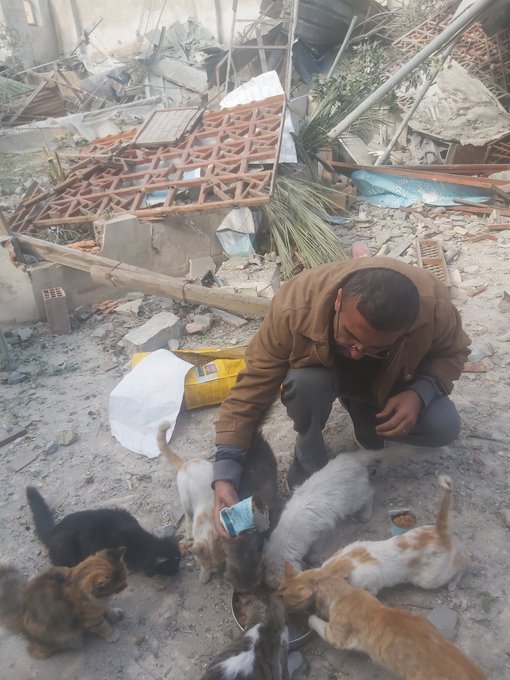
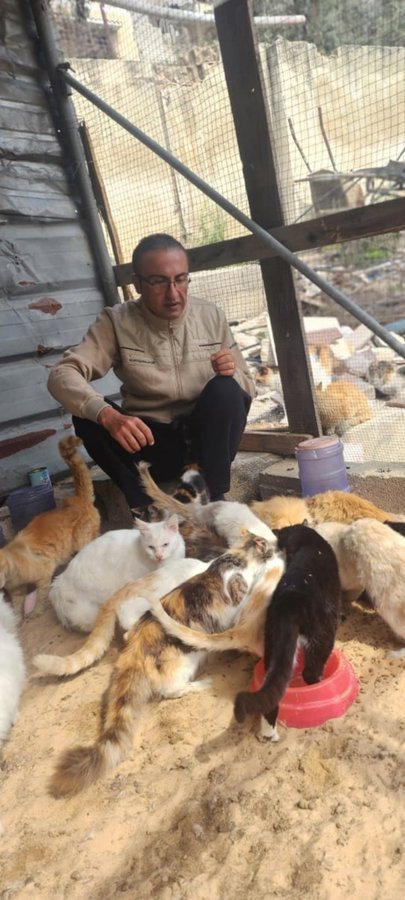
#yemen#jerusalem#tel aviv#current events#palestine#free palestine#gaza#free gaza#news on gaza#palestine news#news update#war news#war on gaza#support palestine#animal rights#animal welfare
1K notes
·
View notes
Text
Not sure if people are aware of this but for 3 years these backyard staffy breeders used a magpie they “rescued” to make 6 figure profits. And used the bird to crowd fund purchasing a house.
Now wildlife authorities have rightfully seized the bird and wildlife carers are being inundated with death threats and harassment from the family’s followers. They demand this WILD bird be given back because the dog will be sad.
It’s an obscene display of wild animals being used for profit but covered up by cutesy stories and anthropomorphism.
755 notes
·
View notes
Text
There's a viral video circulating from the Fort Worth Zoo, of two keepers who ended up in a habitat at the same time as a silverback gorilla. Spoiler for good news: neither the humans nor the gorilla got hurt. It's a bad situation that ended extremely well, and that's why I want to talk about it.
The audio for this video is mostly someone praying loudly, so if you need to turn the audio off to watch it, you won't miss anything relevant. If you don't want to watch it, here's the summary: it starts with a keeper running around the corner into the main exhibit, pursued by a large male gorilla. She is quickly able to get into a doorway at the back of the exhibit, but does not completely close the door because the gorilla is standing across from her, watching. He eventually moves off to the right hand side of the exhibit, where we can see a keeper is trapped in the corner at the front. She was trying to move towards the exit as he moved to the right, and she stops, standing very still behind a tree, while he stays along the far right wall. They stay like that for a minute, and then the gorilla runs to the front right corner, and the keeper is able to run to the door in the back of the exhibit and get to safety.
Let's start with basic information. Even though it's just going viral now, this video is from October of 2023. It was taken not by a guest, but by the zoo security officer responding to the situation. Hmmm, seems like he maybe should have been doing something else during that situation, instead of than taking a phone video. It's going viral now because the guy (who is no longer employed at the zoo) decided to post it on TikTok for his five minutes of fame. This guy immediately started giving all sorts of media interviews, answering questions like "why no tranquilizers" inappropriately, making memes out of his own video, generally distasteful shit.
Zoo spokesperson Avery Elander gave a public statement that "thankfully, there was no physical contact between keepers and gorilla, and all staff and animals are safe." A comment from the zoo has also indicated that the incident was due to keeper error. (As opposed to, for instance, something in the fencing breaking.) According to the guy who posted the video, a lock was left unsecured and the gorilla was able to open the door to the habitat. I don't know if I buy it, and again, this just... is probably why he doesn't have a job anymore. By sharing that detail - real or not - he places a ton of public scrutiny and blame on that keeper team. (If that's what happened, I can promise you it will have been dealt with internally.) He also was nice enough to say he wouldn't name the women in the video... but verified they're still staffers at the zoo... which means they're eminently identifiable! Excuse me while I ragequit for a second.
So there's two reasons I wanted to talk about this. The first is to make sure it is well known that this guy is purposefully and intentionally exploiting the worst day of someone's life for media attention. Their lives were in danger, and he's using it for fame. His name is in the media articles - I'm not going to share it because he doesn't deserve that attention. The second reason, though, is because this video is a masterclass on how to survive if you end up sharing space with a gorilla. Every zoo person I've spoken to or seen comment on the video is so, so impressed with how the keepers handled themselves.
The gorilla in this video is 34-year-old Elmo. All apes in AZA zoos are managed in protected contact, so keepers are supposed to be separated from them by a barrier at all times. The zookeepers were in the habitat putting out a mid-day meal when he got out. Watching the video, you can see he's not actively being aggressive towards them - he's not making threat displays or trying to approach them. Mostly, Elmo seems like he doesn't know what is going on and he's kinda freaked out about it. (This is confirmed in the zoo's press statement, too). The staff stayed calm, and importantly, watched and waited to see how he'd move and act.
The zoo did say one thing, though, that's a bit misleading. In one article, their press person I quote as saying “In general, gorillas are considered the “gentle giants” of the great ape species.” Just because this may be true in comparison to other great ape species doesn't meant gorilla aren't still incredibly dangerous. This type of messaging always worries me, because I think it leads people to misunderstand the risks of being close to megafauna. Gorilla are extremely strong animals, and their social norms/behaviors are very different from that of humans. That's why it's such a big deal any time people end up in gorilla habitats, and why sometimes in those circumstances lethal measures have to be taken to protect human life.
These keepers are incredibly lucky to be unharmed. These women stayed safe specifically because they're trained professionals who knew how to act around gorilla, they knew this particular animal well, and they'd learned the escapes from the exhibit just in case this ever happened. We should applaud them for their cool heads and quick thinking.
As for the guy who posted the video? As a colleague put it, may he always step on a Lego.
12K notes
·
View notes
Text
Okay, I know people as a general rule tend to not care about invertebrates as much as cute, fuzzy mammals, but this is a must-read if you care about animal welfare. The short version is that horseshoe crab blood has been used for decades in medicine as a way to test whether something is truly sterile; the blood clots in the presence of bacteria. Since then millions of horseshoe crabs have been captured and drained of blood, even though a synthetic alternative was developed a few years ago.
They go through a pretty brutal experience in the process. They're caught by fishermen who often throw them by their tails into a pile in the open air, and they're then trucked to a bleeding facility where they're strapped down and their blood is removed with needles jabbed directly into their hearts. Over half their blood may be taken, after which they're supposed to be returned to the ocean. However, it's likely many of them never make it back, instead turned into fish bait and sold by the same fishermen who caught them in the first place.
Apart from the fact that this is a horrific thing to put any animal through, the attrition due to fatalities has put a serious dent in horseshoe crab numbers. This is compounded by massive habitat loss, pollution, and the capture of horseshoe crabs as food, particularly as the females of one species are considered a delicacy. And other animals that rely on horseshoe crabs are suffering, too. The American rufa subspecies of the red knot, a medium-sized shorebird, is critically endangered as the horseshoe crab eggs it must have in order to successfully complete migration have become increasingly scarce, and it is likely the bird will become extinct if trends continue.
While there are guidelines for medical horseshoe crab harvest, they're considered optional. The few laws that exist are poorly enforced. Short of a complete ban on horseshoe crab blood in favor of the synthetic alternative, these animals are in very real danger of going extinct after a history spanning over 400 million years on this planet.
Thankfully, this article is not the first to bring forth the issues surrounding horseshoe crab harvest. Here are a few resources for further information and action (US based, though horseshoe crabs are threatened throughout their entire range):
Horseshoe Crab Conservation Network - https://horseshoecrab.org/conservation/
Wetlands Institute - https://wetlandsinstitute.org/conservation/horseshoe-crab-conservation/
Horseshoe Crab Recovery Coalition - https://hscrabrecovery.org/
#animal welfare#animal cruelty#cw animal cruelty#animal suffering#horseshoe crabs#invertebrates#wildlife#animals#environment#conservation#endangered species#extinction#nature#medicine#science#scicomm#science communication
8K notes
·
View notes
Text
*outdoor cat owner voice* weep for poor mr mittens, taken too soon. he lived for 3 years before being struck and killed by a car. and only weeks after he narrowly survived being ripped apart by a fox. would that there were a way to prevent such tragedy, but alas, i cannot deny the 2007 toyota land cruiser its natural prey. off to the shelter, to obtain another animal to let loose around the neighborhood. perhaps this one will live as long as my late madame tuna, who reached the ripe old age of 6 before injesting rat poison and dying.
1K notes
·
View notes
Text
Wildlife rescue organisations here have very intense politics. Like, if you criticize any organisations’ practices you can end up being “locked out” of even unpaid positions in all of them. Which is why this is going safely under a username and not anywhere near my actual one. But it’s so frustrating watching everyone making the same mistakes over and over again.
So some baby animal can’t be released, and it’s decided that they will be used as an education/ ambassador animal. Because of this, they don’t need to be raised to avoid humans. But some people think that this means they should be treated like human children. One organisation literally started splitting up captive-born joeys from wild but un-release-able kangaroos specifically to raise so that when they grew up they would “think they were human”. And for the first year or two it goes great. They want to snuggle with everyone who will look at them, they play with people, and they are just unbearably cute. And people aww about it and say that they really do think they’re human.
When they start to reach sexual maturity, they start “acting up”. People get kicked and scratched and they start to realise that their “child” isn’t acting so snuggly anymore, and they get angry. And the kangaroos have no fucking idea why, because they can’t know that they’re play wrestling is strong enough to hurt us. Because it turns out they don’t think they’re human, but they certainly seem to think we’re kangaroos.
And by the time they’re old enough to start fighting for real, it’s already too late to do anything about it. You can’t let visitors anywhere near them for safety reasons. 90% of the staff and volunteers won’t go in to clean the enclosures, and a lot of them still blame the animals. Some animals are so risky to work with that feeding them takes two people in the enclosure and one person acting as a “spotter”. There is no PPE for this, so people end up using plastic buckets as shields.
Anyway I’m mostly just yelling at the void, but if anyone reading this was wondering why a lot of zoos and wildlife rescues don’t cuddle the baby animals. it’s because of this sort of thing. There are a lot of really good ways to make sure baby animals feel comfortable and safe, but handling them too much usually either scares them, or means that they could seriously injure someone down the track.
It’s also why so many people who’ve worked with animals are so strongly against people owning certain types of exotic pets. If someone is telling you not to get a pet serval or kangaroo or whatever else people are keeping in their living rooms, there’s a good chance they’re trying to stop you getting mauled.
#What does being kicked by a kangaroo feel like?#Slightly less enjoyable than being hit by a cyclist#just to be clear the kangaroos aren't bad#they're just trying to play half the time#but they're so strong that even playing can become dangerous#animal welfare#animal cruelty#exotic pets#wildlife rehab
3K notes
·
View notes
Text
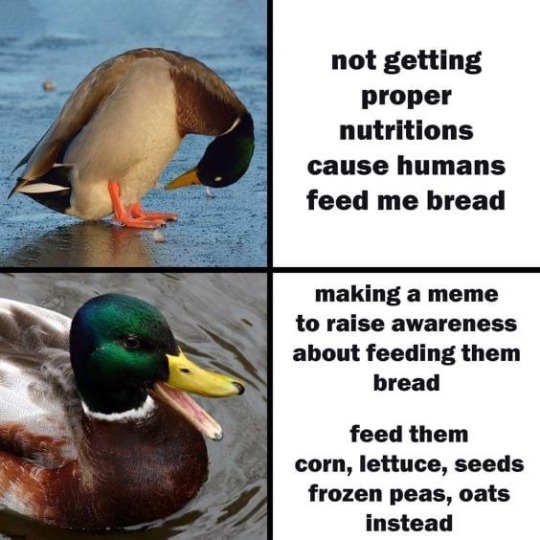
3K notes
·
View notes